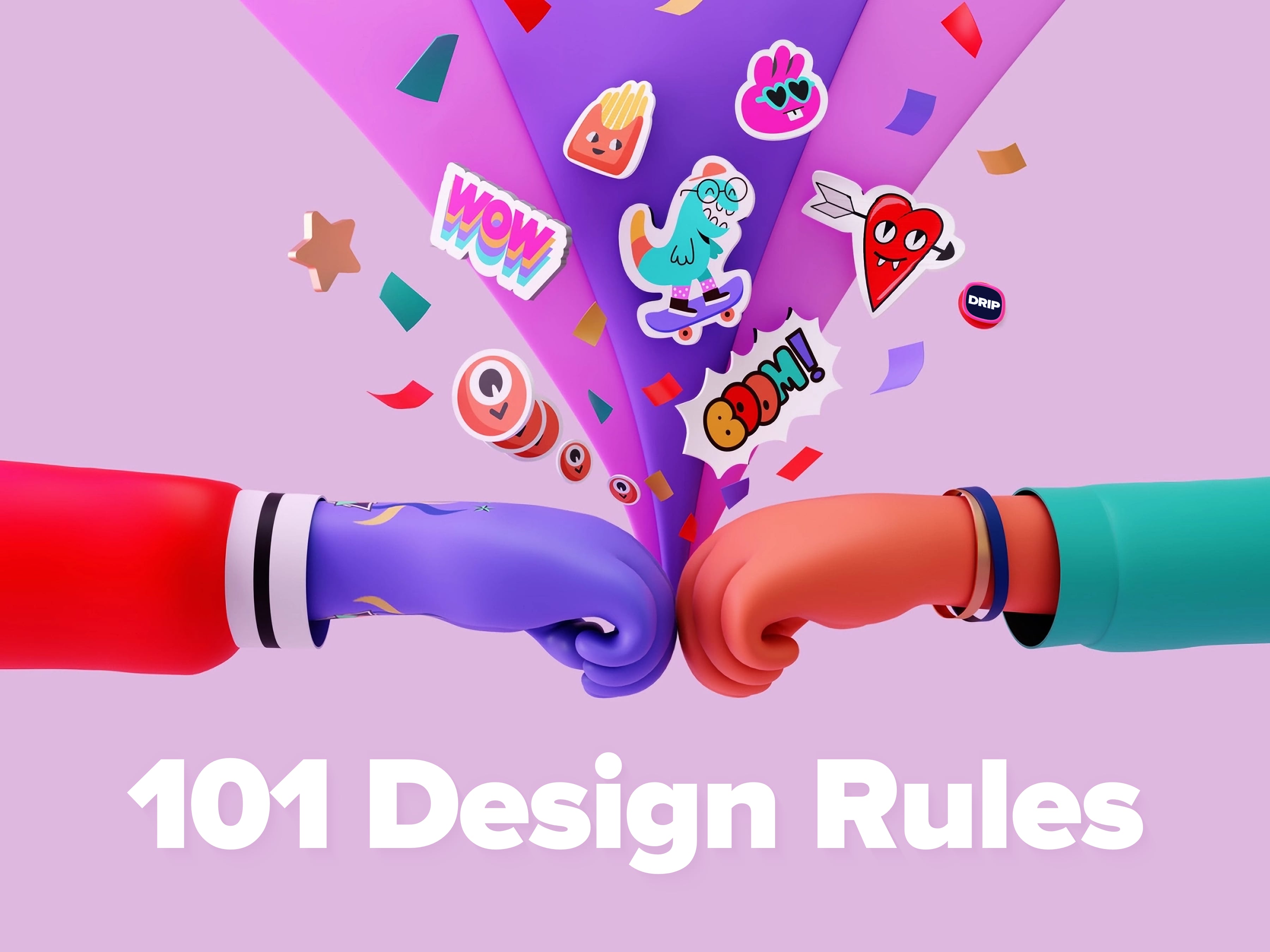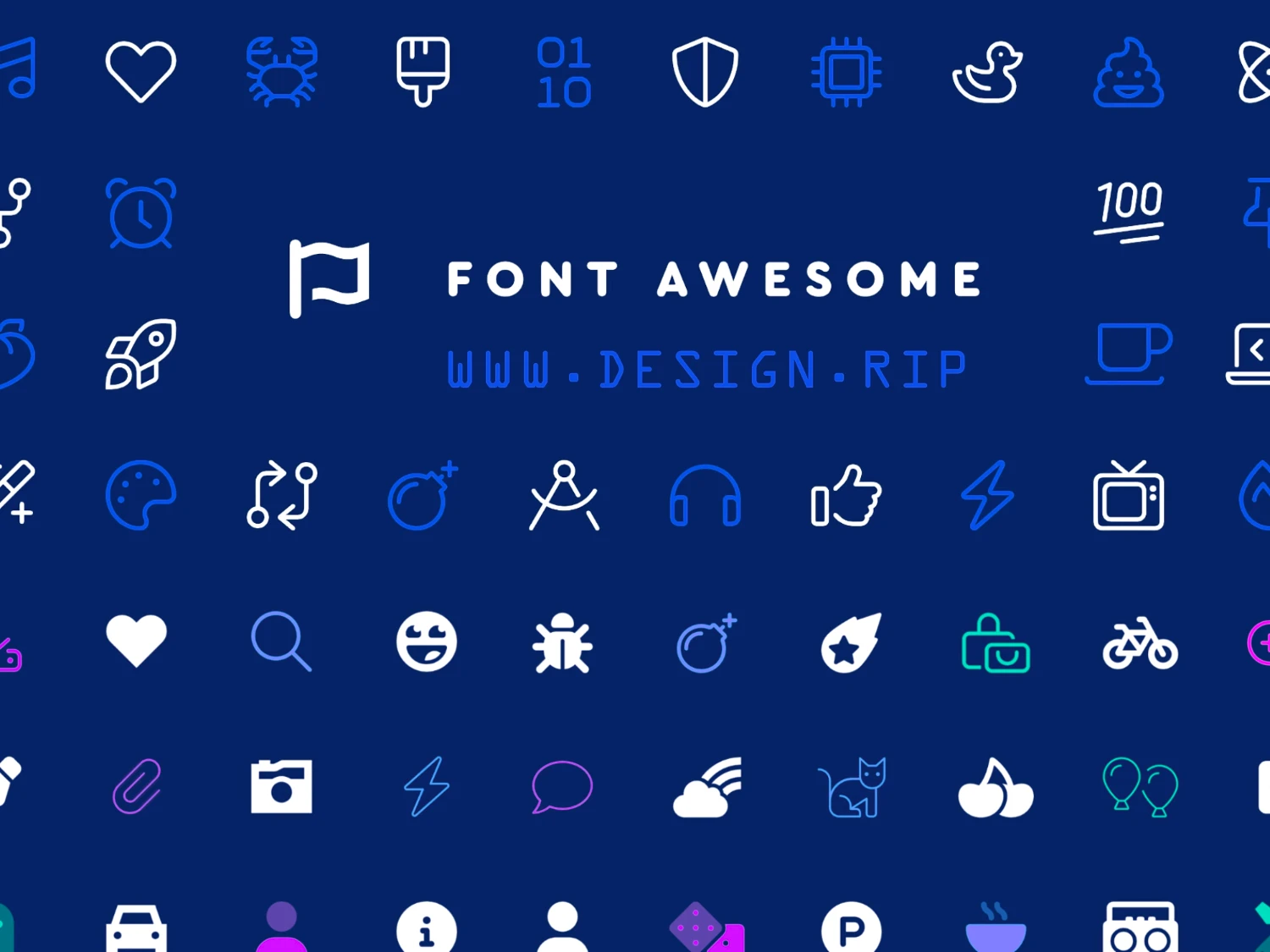101 Design Rules
Musings, ramblings, and principles that I’ve shared with my team and randomly on Twitter. Reminding yourself of the principles that ground you is simply a good practice. Here are mine.

-
Design is hope made visible.
-
You can live your life as the result of history and what came before, or you can live your life as the cause of what’s to come. You choose.
-
When talent doesn’t hustle, hustle beats talent. But when talent hustles, watch out.
-
When you work only for money, without any love for what you do in and of itself, your work will lack energy. People will feel that. So give every project everything you’ve got, at every moment, every time.
-
A good philosopher will say: “Know thyself.” A good shopkeeper will say: “Know thy customer.” A good designer will say: “Know both.”
-
Listen for when someone is dismissing your ambitions. Only the petty do that. Avoid them. Instead, seek out those much better than you; they’ll make you feel that you can achieve your dreams, as theirs are probably even larger. They’ll wave you on to the finish line.
-
A brand is always answering two questions. The first one internally facing: What do we believe? The second, externally: How do we behave? You must remain authentic to yourself, your core values, and what you stand for. If you’re not, people will sniff you out. But your brand must maintain cultural congruence — remaining relevant to the times, always evolving to inspire people at large. The answers to these two curiosities must always be aligned.
-
Find a way to connect every project to something much bigger: a higher order value, a truth, a courageous goal, or a larger question. Then, if your efforts start to lag or feel mundane, return to that larger ideal that inspired you in the first place. It works.
-
Put this over your desk: “You never change things by fighting the existing reality. To change something, build a new model that makes the existing model obsolete.” Buckminster Fuller knew stuff.
-
A good designer will help a company get to where they want to go. A great designer will push a company to where they should go.
-
Are you going to tell a story? Then tell a big story. An enormous story. An epic story. Or tell no story at all.
-
The role of creative leadership is to create more leaders — not more followers. This view is more uncommon than I’d like.
-
I’ve learned that there are only two kinds of people:
1.) People who do exactly what they say they’ll do.
2.) People who are full of shit. -
Form follows fantasy. Every good idea comes from a spark of imagination, not pragmatism. Facts are important. But possibility creates futures.
-
Never take an unpaid internship. Ever. It is unethical to be offered one, and in many places, it is illegal. But more importantly, what kind of people would refuse to pay you? Oh yeah, really shitty people.
-
If you lose the desire to be silly, the power to laugh, and the ability to poke fun at yourself, you will lose the power to think. All work and no play makes Jack a dull boy for one reason: It kills off his imagination.
-
Stuck on a problem you can’t solve? Go bigger. Expand it. Make it giant. Do not try to contain it, or simplify it, or reduce it. Make it so large that you can begin to see a new pattern. Solve the larger problem and the smaller one will get solved along the way.
-
Always begin in mythology. It’s good fuel. Fables and fantasy don’t age or grow stale for one reason: They are a step into a dimension beyond the reach of time itself. Build with them.
-
When I turned 35, I shifted my desire to be happy to a desire to be useful. It made all the difference.
-
There are only two kinds of leaders:
1.) Those in the engine room helping the crew shovel the coal.
2.) Those who sit on top of the train and wave at the crowds as they pass by. -
Learn from ad agencies. They say yes to everything, even when they can’t do it. But they try. Designers say no all too often: “Oh, no. We don’t do that!” That’s shortsighted. Instead, say yes to everything. But always add “yes…if.” Then define your terms.
-
I was on a board with the esteemed educator Sir Ken Robinson. At one meeting where a pompous guest was droning on, he turned to me and whispered, “What we do for ourselves dies with us when we leave this planet. What we do for other people can live on forever.”
-
The opposite of courage is not cowardice. The opposite of courage is conformity.
-
Ubiquity = Invisibility. What we’re overly familiar with, what becomes common, we stop seeing. One function of design is to restore our perception, renew our understanding, and invite us to be more alert.
-
Seek simplicity only on the far side of complexity. Do the work, the research, the understanding, and discover the unseen, surprising, unanticipated insight before you start crafting your solution.
-
A celebrated designer I admire once said “Style = Fart.” I disagree. I believe “Style = Accuracy.” It gives focus and timely relevance to ideas.
-
If you want to make people like things, work in advertising. If you want to make things people like, work in design. Both are valid ways to build a brand, but the second way pays off better in the long run.
-
You can always pull a good story out of a successful product or service. You can’t always pull a good product out of a story.
-
Hire gifted people your clients would never let in their front door. Give them influence. Clear the runway. Provide sandwiches. And stand back.
-
When designers get overwhelmed we can retreat into passivity. We pull back. This gives us an illusion of control. The less we try, the less our chances to fail. We make it look like we’re not responsible for what happens to us. But never give up. Move in closer, instead. Try. Make a mistake. Apologize quickly. And keep trying.
-
Never be boring. Be ridiculous. Absurd. But never be boring. (Yes, this rule will get you in trouble.)
-
Push.
-
Push harder.
-
The goal is to make the complicated simple — not the other way around. The best ideas are often expressed as simple ideas. They’ll have power because they’ll feel inevitable.
-
Looking backward from the end of a project, it will have the appearance of inevitability. But when you began, you had no idea you’d end up there. What dullards suggest at this point is dangerous: “This creative process is too messy and too complicated. It needs efficiency since this solution was so logical. We should apply more logic throughout the process!” That’s the beginning of the end of creativity. Resist this urge. It destroys spontaneity, originality, serendipity, and unintentionality, which is where the biggest ideas are waiting for you.
-
Do you find yourself surrounded by people who whine that “clients don’t understand what we do”? Those people will never have good clients.
-
A designer’s first job is to articulate the tangible value we bring to every situation. It’s not the clients’ job to try to guess it.
-
Average designers hit the brakes when they feel fear. But when the talented get frightened, they hit the pedal, accelerate, and drive headlong into the unknown.
-
I’ve taught students for 20 years. In that time I’ve seen self-confidence, persistence, and desire play a much larger role in growth and achievement than talent. Passive? Whining? Waiting for orders? You won’t get off the ground. Energized? Enthused? Curious? The sky’s your limit.
-
If you want to teach design, first read “Teaching to Transgress” by bell hooks. Your whole mindset will change. If it doesn’t, please do not teach.
-
Seeking mastery in design means being comfortable with making your own path. Forge the new road. Others will question it and doubt it. But that path will eventually come to fit your soul. It will not only lead you into deeper parts of your craft, but to hidden parts of yourself.
-
There may come a time when someone publicly attacks you or your work. If that happens, remember this: Those who attack are the ones who fear you the most. They’ll suspect that your talents might be greater than theirs. They, in fact, become your most sincere believers. It’s a proof point when they start showing up. Watch for them. Then thank them when they arrive.
-
“Always think with your stick forward.” Amelia Earhart painted that on her plane. She meant, I imagine, to seize the moment when it arrives. Refuel as necessary. Don’t wait for any damn kind of “inspiration.” Punch the throttle. Get back in the air. Keep flying.
-
Are you at an agency that habitually recruits outside industry hotshots to lead instead of promoting potential hotshots from the ranks? Run. Now. It will never become what it wants to become.
-
Separate talkers from doers. For someone to score an interview, I suggest a good book — on anything — to read in advance. “After you finish it, call me, and we’ll schedule some time.” 90% drop off. There are exceptions, but I hire from the remaining 10%.
-
Be careful of doing too much work that copies the people you admire. Start out that way to see what feels right. But aim to seek what they were seeking instead of doing what they were doing.
-
Stay away from people who confuse pomposity for profundity. Articulate incompetency is contagious.
-
When you’re out-gunned, out-staffed, and out-equipped in a competition, what are the things you’ve got left to use? Kindness and imagination.
-
When someone disagrees with you, do not defend yourself. Instead, listen. Ask them to explain, validate their concern, expand on it, and affirm their point of view. Only then will anyone listen to anything you have to say. I wish someone had told me this in my teens.
-
We don’t create fantasy worlds to escape reality. We create them so we can better see, understand, and reshape reality.
-
Seek ambition. Hire character. Train talent.
-
When I hear the word “iterate” more than three times in three minutes, I fear there will be a Post-It® fiesta within three minutes. Fair warning.
-
A story is not just a tale of conflict. It can be a well of shared values. If you shift the story people tell about themselves and their communities, you can not only shift those people, you can shift an entire culture.
-
Build a library for yourself, and read John Milton. He had profound respect for books and human thought. “For books are not absolutely dead things, but do contain a potency of life in them to be as active as that soul whose progeny they are; nay, they do preserve as in a vial the purest efficacy and extraction of that living intellect that bred them.” A better definition about the sanctity of books was never written.
-
Notice someone doing something cruel for the first time? Never wait for a second time. Address it fast, or cut them out. Either way, do not “wait and see.” It leaves you and your team vulnerable. What they showed you is who they are. Move fast.
-
Mastery is not gained from intellect. Mastery is not gained from talent. Mastery is not gained from ambition. Mastery is only gained from time and focus applied to your craft over many, many years. Do not conflate it with fame.
-
Try absolutely everything. Then try it all again. And then, one more time.
-
Accept compliments gracefully. Treat flatterers with suspicion. Listen to your complainers and cynics — not because you might learn from them, but because they secretly care.
-
Design ain’t what the thing looks like. Design is what the thing does.
-
Smartphoning has supplanted daydreaming. Fixated on our little, lit-up screens, dusty old thoughts no longer slip out of our brains as easily, so no new, silly, absurd thoughts slip back in. And all good ideas start out as silly, absurd thoughts. Turn off your phone. Daydream. Fart around. Ponder. Let something odd fly in that’s floating around, hoping for an open mind to land in.
-
If an idea doesn’t scare you in some way, it’s not really a good idea.
-
A strong, sincere voice is like a clear bell—when rung, it travels far, across fields, mountains, and rivers. Ring it. And teach others to.
-
Ignore those who tell you to “only focus on your strengths.” Nonsense. Your strengths never go. Build them, hone them, and add muscle to them. But also focus on what you need to move into new and larger worlds. Become a shocking triple threat, not just a shiny, one-trick pony.
-
Failures are not always mistakes. It just might have been the best you could do at that point. Okay, fine. Apologize quickly. The real failure is to beat yourself up and not take the opportunity to learn.
-
Never hire people for “cultural fit.” What a pernicious term. Instead, hire insanely talented people for their “cultural contribution.” For how unique they are. For why they are different from you. For what they will add that you do not have.
-
People who use the word “lifestyle” don’t have one.
-
Big agency order of importance: Clients –> Work –> People.
Ours: People –> Work –> The client’s customers –> Clients.
It’s easy. Good people do good work that customers love so clients succeed. T’was ever thus. -
Don’t work with clients to help them become the best. Work with clients to help them become the only.
-
Hire Tigger. Never Eeyore. Surround yourself with optimists. They will build futures into existence.
-
Read a good book every week. After a year your brain will be fueled like a rocket and your mind will naturally start going to new places, connecting new ideas, and thinking in ways you never have before.
-
Never create and edit at the same time. Get all the sloppy, ugly roughs and first drafts out. Quantity is more important than quality at the start. Mess is more.
-
All ideas are bad ideas. They only become good through craft and love.
-
Clients want you to succeed like crazy. That’s why they hired you. Show them how. That’s your damn job. Do it.
-
We perceive through images. We think in metaphors. We learn by stories. We create with fantasy.
-
When you find yourself on the horns of a dilemma, always do the honest thing. This will shock people. And you’ll come out better, anyway.
-
Perhaps. Maybe. Possibly. Someday. These are among the most damaging words a creative person can use. Lose them.
-
Everybody starts out with good intentions. Not everybody finishes with them. This has been the most painful thing I’ve ever learned.
-
People already know what advice they need to hear. They just need to hear it told to them by someone else.
-
There is no such thing as “The Future.” There is only and always “The Futures“—and they are all in competition with each other, fighting for dominance. Which future will you feed?
-
When asked for a definition of “brand,” I use this: A brand is a promise performed consistently over time. It’s held up for a while now.
-
Brands are mentors of things to come. The best ones anticipate, create, and move us into tomorrow.
-
Companies are no longer in competition with each other. They are—we all are—in competition with the future itself.
-
The era of human-centered design is now gone. Our existence was never human-centered, anyway. Covid-19 proved that to be nonsense. It’s time for environment-centered. Not sustainability. Regeneration Design where we create not apart from Nature but as a part of Nature.
-
It is never about winning. It is never about losing. It is only about contributing. It is only about learning.
-
I’m tired of talks from “designers” who never design anything beyond their keynotes. I’m tired of talks from “entrepreneurs” who never build anything beyond themselves. I’m tired of talks from “thought leaders” who lead nothing but the perpetuation of their own fame.
-
When you submit a fee for your work, someone will always ask, “Is this negotiable?” Answer with this: “Yes. Up.”
-
In the end, it’ll not be what you took. It’ll be what you gave away.
-
Do not worry about your competition. You’re not in competition with them anymore. You’re only in competition with the future itself. So don’t look over your shoulder. Look two, three, five years down the road and invent backward from there.
-
Design is the bridge that gets us from where we are to where we should be. It is future-making. And it’s our job to get our clients into the best futures for themselves as quickly and effectively as possible.
-
Skip the whole “Minimal Viable Product” thing. It leads to incrementalism. Try “Maximum Fucking Love.” It leads to something that someone else might actually care about.
-
Be aware that every choice you make comes down to two options: Feeding grievance or creating hope. In the end, it is that simple.
-
The era of problem-solving is gone. It’s too reactive in a world where the future arrives too fast. Designers must now be problem seekers, finding and anticipating problems before they arrive on our desks, because at that point, it’s already too late.
-
We must now all build bridges, not walls. The rest is detail.
-
Design Thinking gives a definition of romantic expression as found in timely historical contexts. Design says: “I’ll be upstairs.”
-
In first creative presentations, to ensure your creative work has time and space to land, ban all of the devil’s advocates from the room before you show a thing. Then say this: “We are here to create something new. New ideas can be fragile because they are unfamiliar. You may not like something you see here, but you are not allowed to say that for now. We’ll have to edit and remove some of this work later, but for now, everything will be in play. So find something, anything, you like in every idea. A color. A word. An image. A sentence. Anything. In the end, we find what we look for. And today we are going to look for the new.”
-
In the end, there are only two key questions the world asks of us: 1.) Who are you? 2.) Where are you going? These questions are the same ones we ask our clients. The first is about authenticity; the second is about relevance. Asking them will keep the world wide open in front of you.
-
Whether you like it or not, your brand’s story already exists, so you should manage it as you would any other powerful company asset. After your product, your means to deliver it, and your audience, your story will be the most potent tool you have to build with.
-
Be very. For a very long time, it took a very long time for anything to change. If you found an answer that worked, you could count on it being the answer for ages. But those days are over. Being an answer is not the answer. Or even an option. Unless, of course, you’re very curious. Or very focused. Very gay. Very straight. Very caring. Very prickly. Very visual. Very verbal. Very brash. Very funny. Very heady. Very anything. Everyone at COLLINS is very something.
-
If I took any lessons from Ogilvy, it was these two: 1) Think bigger. And then, think bigger still. 2) Take every chance while you can. Grab them. And go all in. You never know if they’ll ever come again.
-
Experience. Don’t observe.
Inhale. Don’t read.
Transfigure. Don’t shift.
Advocate. Don’t ponder.
Prove. Don’t promise.
Encourage. Don’t cut.
Imagine. Don’t worry.
Do. Don’t analyze.
Hear. Don’t listen.
Show. Don’t tell.
Give. Don’t take. -
Design is not what we make. Design is what we make possible.

Brian Collins is the Chief Creative Officer of COLLINS.
Artwork by Andy Liang.
What's Your Reaction?














![[VIP] DesignCode: Build Beautiful Apps with GPT-4 and Midjourney](https://design.rip/uploads/cover/blog/designcode-gpt4.webp)
![[VIP] AppCoda: Mastering SwiftUI - Professional Packet (Updated 04.2023)](https://design.rip/uploads/cover/blog/appcoda-mastering-swiftui-professional-packet-worth.webp)
![[VIP] AppCoda: Beginning iOS Programming with Swift (Updated 04.2023)](https://design.rip/uploads/cover/blog/appcoda-beginning-ios-programming-with-swift.webp)
![[VIP] Whoooa! 156 vector Lottie animations](https://design.rip/uploads/cover/blog/whoooa-156-vector-animations.webp)







![[VIP] Motion Sound Vol. 1](https://design.rip/uploads/cover/blog/designrip-svx.webp)


